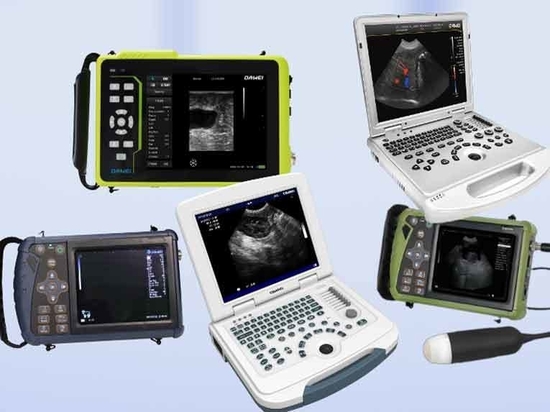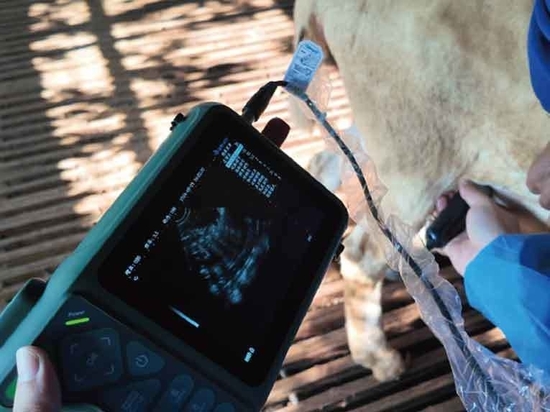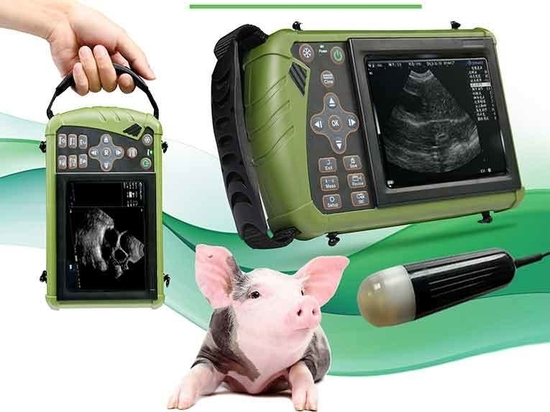
#Livestock
Equine Ultrasound Machine for sale
Equine Ultrasound Machine for sale
Equine ultrasound machine examination is a diagnostic imaging technique used to visualize internal body structures. Visualization of structures such as tendons, muscles, blood vessels, and internal organs may provide valuable information to the veterinarian. Not only does it provide information from a diagnostic standpoint, but accurate interpretation of ultrasound images may also provide valuable supporting information for treatment selection, response to treatment, and may be useful as a prognostic indicator for certain disease processes.
The use of equine ultrasound machines in veterinary testing
One of the most common applications of ultrasonography in horses is the evaluation of colic. Although the value of ultrasonography in adult horses has been questioned, it is still considered invaluable in horses with colic. Limitations include the size and depth of the abdomen, the partial wrapping of the ribs around the abdomen, and the degree of distention that sometimes occurs. Despite these limitations, ultrasonography provides a wide range of information that cannot be obtained by any other modality and can help veterinarians determine if a horse has a medical or surgical lesion.
Ultrasonography has also proven invaluable in the musculoskeletal and respiratory organ systems. The extent of tendon damage and response to treatment can be diagnosed and monitored by ultrasound.
Ultrasound evaluation of the equine respiratory tract aids in the diagnosis, treatment, and prognostic evaluation of peripheral lung parenchymal or pleural disease. It is considered superior to thoracic radiography for the detection of pleural effusions, lung solidity, abscesses, and tumors. Chest ultrasonography has been successfully used for the diagnosis and need for therapeutic intervention in erythrocystis pneumoniae ponies. One limitation of chest ultrasound is that lesions located deeper within the lung tissue may not be detected if they are located below the normally ventilated lung tissue. The reason for this is that air or gas reflects the ultrasound beam and therefore cannot be seen deeper within the lung tissue.
Unlike adult horses, the size of foals makes them more amenable to scanning, overcoming some of the limitations of adult horses. Ultrasound is recommended for all septic foals as well as for conditions such as navicular infections (umbilical cord infections), which are not always visible externally, pneumonia, and gastrointestinal disorders. Most umbilical cord infections respond only to pharmacologic interventions, and the response to antibiotic therapy can be monitored by repeated ultrasound evaluations.
In conclusion, ultrasound is a very useful diagnostic modality. Subtle changes may require more experienced interpretation, but overall, can provide valuable information to the veterinarian.
Equine Ultrasound Machine for sale
Equine ultrasound is a non-invasive diagnostic method that does not harm the horse in any way. Equine ultrasound machines provide real-time images, allowing veterinarians to make a quick diagnosis. When purchasing an equine ultrasound machine, the first thing to consider is the portability of the ultrasound machine, making it easy for veterinarians to use it in different environments, such as stables or race tracks. Secondly choosing a high resolution image can help the veterinarian diagnose the problem more accurately, and different probes are suitable for different parts of the horse and depth of the examination. There are various brands and models available in the market, such as the Dawei Veterinary Ultrasound S1 which is turned for examining large animals, like cows and horses. Veterinarians need to weigh the purchase against their budget and needs.
If you have specific needs or require a recommended model, you can provide further details for more accurate advice.





